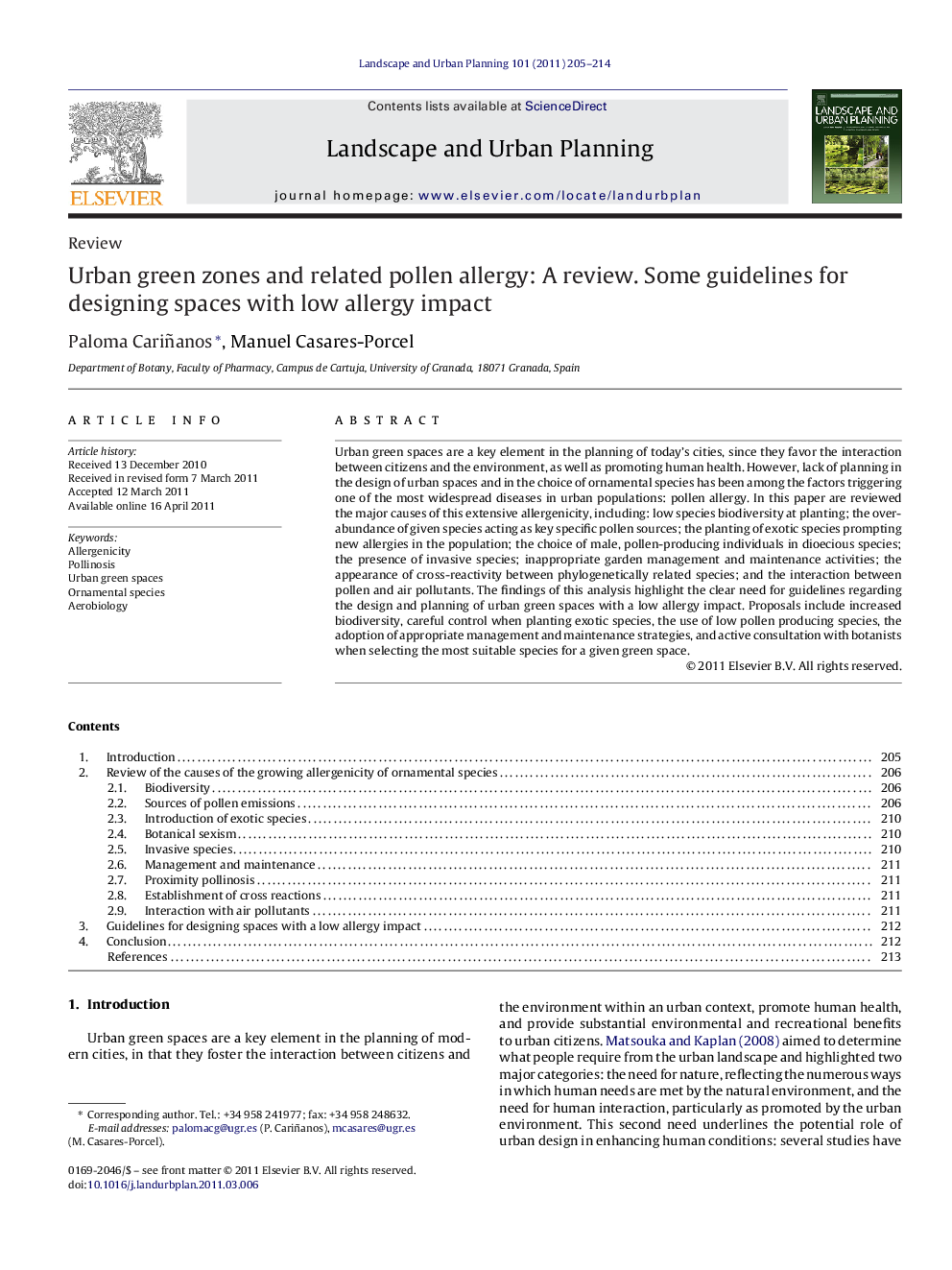| Article ID | Journal | Published Year | Pages | File Type |
|---|---|---|---|---|
| 1049693 | Landscape and Urban Planning | 2011 | 10 Pages |
Urban green spaces are a key element in the planning of today's cities, since they favor the interaction between citizens and the environment, as well as promoting human health. However, lack of planning in the design of urban spaces and in the choice of ornamental species has been among the factors triggering one of the most widespread diseases in urban populations: pollen allergy. In this paper are reviewed the major causes of this extensive allergenicity, including: low species biodiversity at planting; the overabundance of given species acting as key specific pollen sources; the planting of exotic species prompting new allergies in the population; the choice of male, pollen-producing individuals in dioecious species; the presence of invasive species; inappropriate garden management and maintenance activities; the appearance of cross-reactivity between phylogenetically related species; and the interaction between pollen and air pollutants. The findings of this analysis highlight the clear need for guidelines regarding the design and planning of urban green spaces with a low allergy impact. Proposals include increased biodiversity, careful control when planting exotic species, the use of low pollen producing species, the adoption of appropriate management and maintenance strategies, and active consultation with botanists when selecting the most suitable species for a given green space.
► Low biodiversity of urban ornamental species is some of the causes of growing allergenicity in cities. ► Botanical sexism stimulates the choice of male pollen-producing individuals. ► The planting of exotics prompt new allergies. ► Guidelines for designing urban green zones with low allergy impact, avoiding massive use of some species, are proposed.
